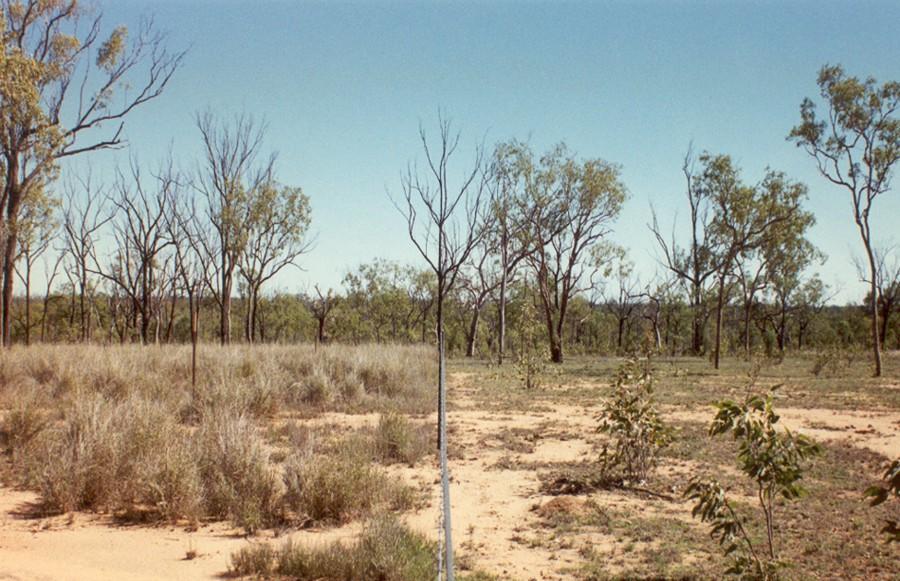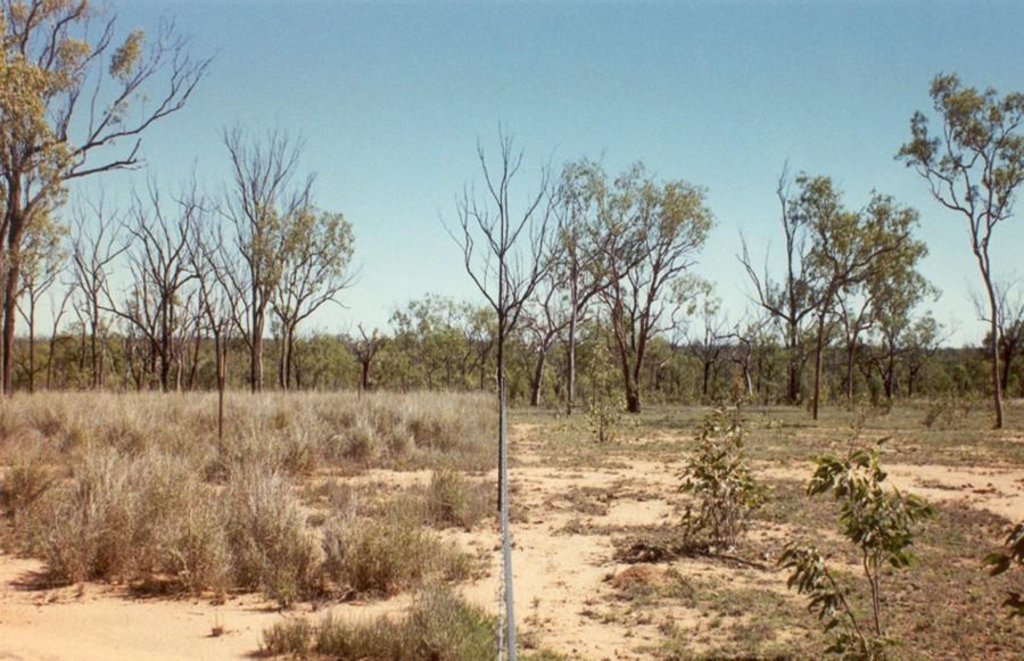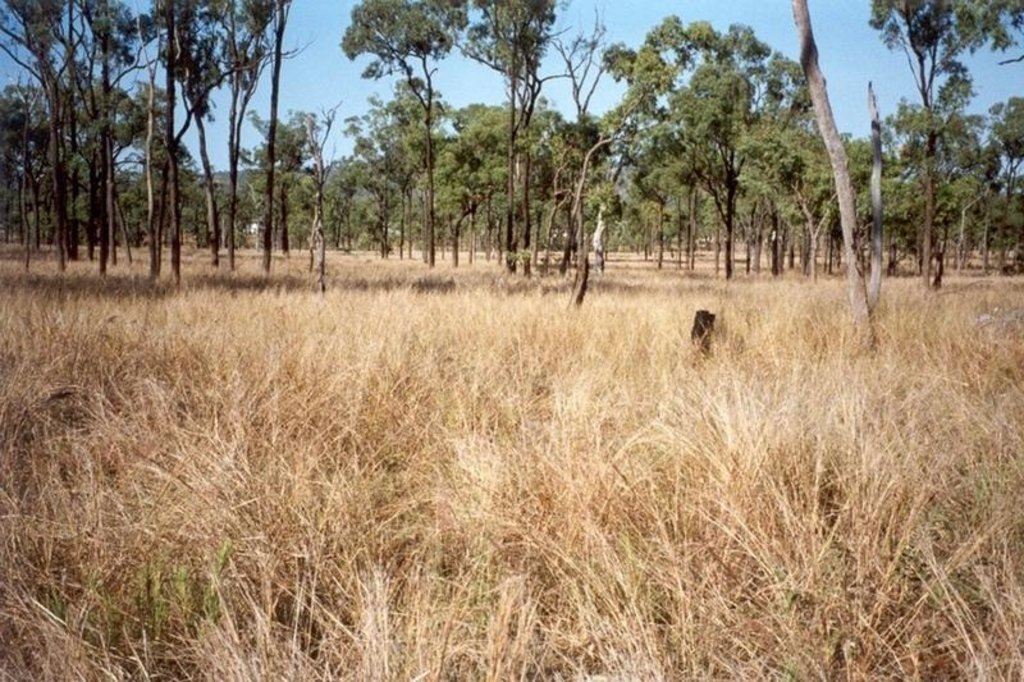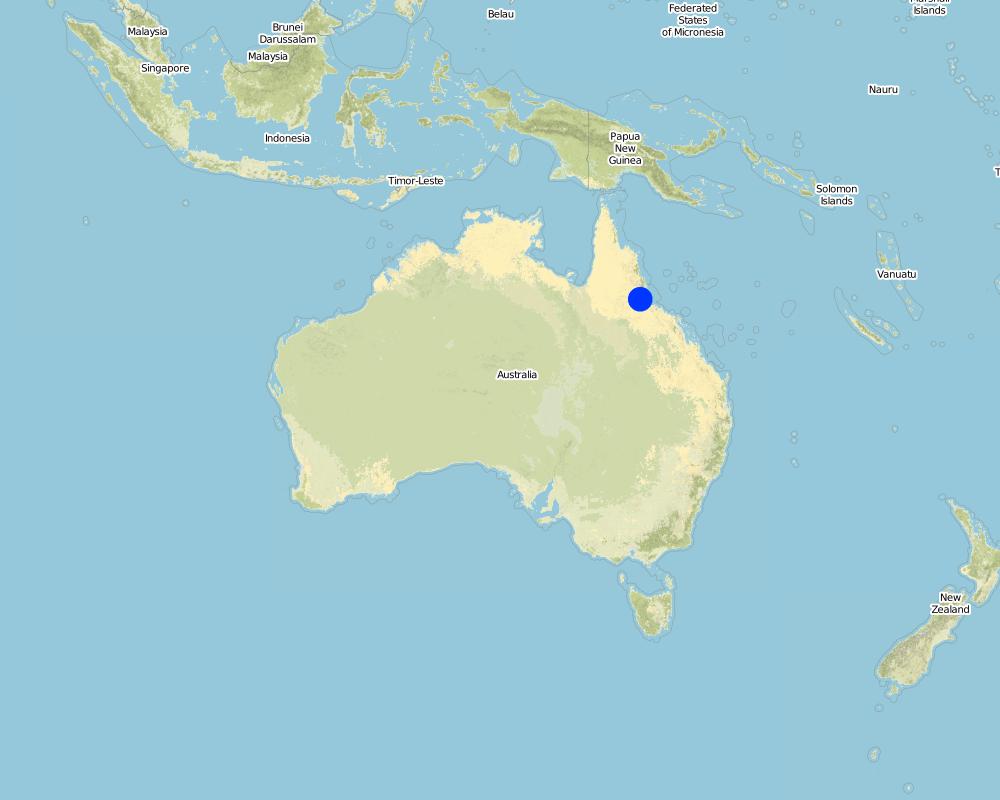Ecograze [Australia]
- Creation:
- Update:
- Compiler: Andrew Ash
- Editor: –
- Reviewers: Fabian Ottiger, Alexandra Gavilano
technologies_1332 - Australia
View sections
Expand all Collapse all1. General information
1.2 Contact details of resource persons and institutions involved in the assessment and documentation of the Technology
Name of project which facilitated the documentation/ evaluation of the Technology (if relevant)
Book project: where the land is greener - Case Studies and Analysis of Soil and Water Conservation Initiatives Worldwide (where the land is greener)Name of the institution(s) which facilitated the documentation/ evaluation of the Technology (if relevant)
CSIRO (CSIRO) - Australia1.3 Conditions regarding the use of data documented through WOCAT
The compiler and key resource person(s) accept the conditions regarding the use of data documented through WOCAT:
Yes
1.4 Declaration on sustainability of the described Technology
Is the Technology described here problematic with regard to land degradation, so that it cannot be declared a sustainable land management technology?
No
1.5 Reference to Questionnaire(s) on SLM Approaches (documented using WOCAT)
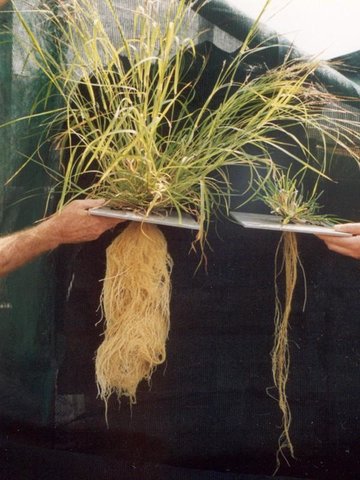
Development and promotion of Ecograze [Australia]
Research-based development and promotion of Ecograze principles and practices through on-farm testing and demonstration.
- Compiler: Andrew Ash
2. Description of the SLM Technology
2.1 Short description of the Technology
Definition of the Technology:
An ecologically sound and practical grazing management system, based on rotation and wet season resting.
2.2 Detailed description of the Technology
Description:
Open eucalypt woodlands cover approximately 15 million hectares in the semi-arid plains of north-east Australia, and support about a million head of cattle. Keeping these grazing lands productive and healthy demands good management, and getting the right balance between stock numbers and the forage resource is a considerable challenge.
Land in good condition has a healthy coverage of so-called ‘3P grasses’: native perennial, productive and palatable grasses, important to cattle and to the health of the landscape. Less palatable plants include annual grasses, native and exotic forbs and shrubs. The heterogeneity of the pasture resource results in uneven utilisation, and thus overgrazing in parts.
In order to prevent pastures in good condition from degrading, or to restore/improve deteriorated pastures, utilisation needs to be adjusted according to climate and the state of the ‘3P grasses’. In practice, the only means of manipulating pasture composition over large areas are grazing, resting from grazing, and burning.
The flexible Ecograze system includes wet season resting, and is based on the establishment of three paddocks with two herds within a rotational system. The key is that all paddocks get some wet season rest two years out of three. Wet season rests are divided into two phases: (1) The early wet season rest starts after the first rains in November/December and continues for 6-8 weeks, it is particularly good for perennial grass recovery; (2) the late wet season rest lasts until March/April and aids both seed set and vegetative recovery.
Average paddocks of around 3,000 ha in size are sub-divided into three relatively equal sizes, though some flexibility is required to balance variation in the productive capacity of different land types within the paddock. The paddocks are fenced and extra water points through polythene piping and additional water troughs, and where required, pumps are established. The return on investment can be realised within a few years.
The main management challenges are: (1) the timing and length of the early wet season rest, which depends on how effectively the early rains promote vegetative growth of perennial grasses, and (2) the movement of animals during the wet season. The number of stock movements are fixed - but the timing is flexible and should be responsive to the situation: the challenge is to learn to assess the pasture condition, read the situation, and schedule the timing and length of the rest period accordingly. The main criterion is the recovery state of perennial grasses.
2.3 Photos of the Technology
2.5 Country/ region/ locations where the Technology has been applied and which are covered by this assessment
Country:
Australia
Region/ State/ Province:
Queensland
Further specification of location:
North-eastern Queensland
Specify the spread of the Technology:
- evenly spread over an area
If the Technology is evenly spread over an area, specify area covered (in km2):
10.0
If precise area is not known, indicate approximate area covered:
- 10-100 km2
Comments:
Total area covered by the SLM Technology is 10 m2.
study terminated after 8 years (2000-2001).
The paddocks of an average size of around 30 km2 are subdivided into three paddocks of an average size of 10 km2. The technology is therefore documented on one of the subdivided paddocks. The 10 km2 is the area per subdivided paddock, each farm (localities) has 10 km2 (respectively 3*10km2) area, where the technology is applied.
Map
×2.6 Date of implementation
If precise year is not known, indicate approximate date:
- less than 10 years ago (recently)
2.7 Introduction of the Technology
Specify how the Technology was introduced:
- during experiments/ research
Comments (type of project, etc.):
Meat and Livestock Australia initiated the project to improve the understanding of the effects of grazing, spelling, fire and climate on the condition and productivity of open eucalyptus woodlands in north-eastern Queensland.
3. Classification of the SLM Technology
3.1 Main purpose(s) of the Technology
- reduce, prevent, restore land degradation
3.2 Current land use type(s) where the Technology is applied

Grazing land
Extensive grazing:
- Ranching
- Cattle
Comments:
Major land use problems (compiler’s opinion): Over the last 20 years there has been a decline in the condition of grazing lands in north-east Australia. The evidence is a decline of palatable, perennial, productive grasses (‘3P grasses’), reduced ground cover and an increase in sediment and nutrient movement into streams. As a consequence of economic pressures and over-optimistic expectations of good rains, stocking rates have often been too high.
Major land use problems (land users’ perception): same as above (combined)
Ranching: Yes
3.4 Water supply
Water supply for the land on which the Technology is applied:
- rainfed
3.5 SLM group to which the Technology belongs
- rotational systems (crop rotation, fallows, shifting cultivation)
- pastoralism and grazing land management
3.6 SLM measures comprising the Technology

management measures
- M2: Change of management/ intensity level
Comments:
Main measures: vegetative measures, management measures
Type of vegetative measures: scattered / dispersed
3.7 Main types of land degradation addressed by the Technology

soil erosion by water
- Wt: loss of topsoil/ surface erosion
- Wg: gully erosion/ gullying
- Wo: offsite degradation effects

physical soil deterioration
- Pc: compaction
- Pk: slaking and crusting

biological degradation
- Bc: reduction of vegetation cover
- Bs: quality and species composition/ diversity decline
Comments:
Main type of degradation addressed: Wt: loss of topsoil / surface erosion, Wg: gully erosion / gullying, Wo: offsite degradation effects, Pc: compaction, Pk: sealing and crusting, Bc: reduction of vegetation cover, Bs: quality and species composition /diversity decline
3.8 Prevention, reduction, or restoration of land degradation
Specify the goal of the Technology with regard to land degradation:
- reduce land degradation
4. Technical specifications, implementation activities, inputs, and costs
4.1 Technical drawing of the Technology
Technical specifications (related to technical drawing):
The drawing refers to the ‘two herd/three paddock Ecograze system’. Paddock A is rested in the early wet season, while Paddocks B and C are grazed. Paddock B is then rested for the late wet season while Paddocks A and C are razed. Paddock C is then rested for the dry season and the next early wet season while Paddocks A and B are grazed. Paddock A is then rested for the late wet season and the rotational cycle continues in this fashion for the three years of the full rotation. Early wet season spelling should commence after the first significant rains in November/December and should continue for 6-8 weeks, depending on how effectively the early rains promote vegetative growth of perennial grasses. Late wet season rest typically last until March/April, depending on length of growing season.
Technical knowledge required for field staff / advisors: moderate; Technical knowledge required for land users: moderate
Main technical functions: improvement of ground cover, increase in organic matter, increase / maintain water stored in soil, improvement of soil structure
Secondary technical functions: control of concentrated runoff: retain / trap, increase in soil fertility
Scattered / dispersed
Vegetative material: G : grass
Grass species: 3P grasses (native perennial, productive and palatable grasses)
Change of land use practices / intensity level: rotational system, timing and length of resting period, timing of animal movement
Control / change of species composition: grazing, (wet season) resting from grazing and burning
Author:
Mats Gurtner
4.2 General information regarding the calculation of inputs and costs
Specify how costs and inputs were calculated:
- per Technology area
Indicate size and area unit:
1 ha
Specify currency used for cost calculations:
- USD
4.3 Establishment activities
| Activity | Timing (season) | |
|---|---|---|
| 1. | Paddocks first need to be surveyed to understand the various plant communities and soils | |
| 2. | Paddocks first need to be surveyed to understand the various plant communities and soils. | |
| 3. | Based on the survey and location of water points, and the most practical location for fences, a paddock design is developed: paddocks are subdivided into relatively equal sizes. | |
| 4. | Fencing the paddocks Material: metal barbed wire or plain wire for electric fences, steel fence posts, wooden or steel end assemblies (poles) to strain the fence, energisers (for electric fences). | |
| 5. | Provision of extra water points through polythene piping and additional water troughs - and where required, pumps. |
4.4 Costs and inputs needed for establishment
| Specify input | Unit | Quantity | Costs per Unit | Total costs per input | % of costs borne by land users | |
|---|---|---|---|---|---|---|
| Labour | Labour | ha | 1.0 | 4.0 | 4.0 | 100.0 |
| Equipment | Tools | ha | 1.0 | |||
| Construction material | others (specify): metal, wire, wood | ha | 1.0 | 6.0 | 6.0 | 80.0 |
| Total costs for establishment of the Technology | 10.0 | |||||
| Total costs for establishment of the Technology in USD | 10.0 | |||||
Comments:
Duration of establishment phase: 48 month(s)
4.5 Maintenance/ recurrent activities
| Activity | Timing/ frequency | |
|---|---|---|
| 1. | Monitoring pastures and soils | |
| 2. | Mustering (gathering) and shifting (moving) livestock | |
| 3. | Monitoring pastures and soils. | |
| 4. | Repair fences (wire, poles, etc) |
4.6 Costs and inputs needed for maintenance/ recurrent activities (per year)
| Specify input | Unit | Quantity | Costs per Unit | Total costs per input | % of costs borne by land users | |
|---|---|---|---|---|---|---|
| Labour | Labour | ha | 1.0 | 1.0 | 1.0 | 100.0 |
| Equipment | Tools | ha | 1.0 | |||
| Total costs for maintenance of the Technology | 1.0 | |||||
| Total costs for maintenance of the Technology in USD | 1.0 | |||||
Comments:
Current average paddock size is 3,000 ha - commonly 6 km x 5 km. To sub-divide the paddock into three requires two internal fences, each of 5.0 km. Costs of fencing and associated gates are about US$1,200 per km. Labour for fencing is also approximately US$1,200 per km (Note: while this looks expensive, because of the large paddock size, on a per hectare basis this is equivalent to US$ 4.0 per hectare).
5. Natural and human environment
5.1 Climate
Annual rainfall
- < 250 mm
- 251-500 mm
- 501-750 mm
- 751-1,000 mm
- 1,001-1,500 mm
- 1,501-2,000 mm
- 2,001-3,000 mm
- 3,001-4,000 mm
- > 4,000 mm
Agro-climatic zone
- semi-arid
5.2 Topography
Slopes on average:
- flat (0-2%)
- gentle (3-5%)
- moderate (6-10%)
- rolling (11-15%)
- hilly (16-30%)
- steep (31-60%)
- very steep (>60%)
Landforms:
- plateau/plains
- ridges
- mountain slopes
- hill slopes
- footslopes
- valley floors
Altitudinal zone:
- 0-100 m a.s.l.
- 101-500 m a.s.l.
- 501-1,000 m a.s.l.
- 1,001-1,500 m a.s.l.
- 1,501-2,000 m a.s.l.
- 2,001-2,500 m a.s.l.
- 2,501-3,000 m a.s.l.
- 3,001-4,000 m a.s.l.
- > 4,000 m a.s.l.
Comments and further specifications on topography:
Landforms: Also hill slopes (ranked 2) and ridges (ranked 3)
Slopes on average: Aslo moderate (ranked 2) and flat (ranked 3)
5.3 Soils
Soil depth on average:
- very shallow (0-20 cm)
- shallow (21-50 cm)
- moderately deep (51-80 cm)
- deep (81-120 cm)
- very deep (> 120 cm)
Soil texture (topsoil):
- medium (loamy, silty)
- fine/ heavy (clay)
Topsoil organic matter:
- medium (1-3%)
- low (<1%)
If available, attach full soil description or specify the available information, e.g. soil type, soil PH/ acidity, Cation Exchange Capacity, nitrogen, salinity etc.
Soil depth on average: Also Shallow (ranked 2) and deep (ranked 3)
Soil fertility: Low
Soil drainage/infiltration: Good (ranked 1) and poor (ranked 2)
5.6 Characteristics of land users applying the Technology
Market orientation of production system:
- commercial/ market
Off-farm income:
- 10-50% of all income
Indicate other relevant characteristics of the land users:
Off-farm income specification: usually constitutes off-farm financial investments (eg shares in companies, investment properties, etc)
5.7 Average area of land used by land users applying the Technology
- < 0.5 ha
- 0.5-1 ha
- 1-2 ha
- 2-5 ha
- 5-15 ha
- 15-50 ha
- 50-100 ha
- 100-500 ha
- 500-1,000 ha
- 1,000-10,000 ha
- > 10,000 ha
5.8 Land ownership, land use rights, and water use rights
- individual
Land use rights:
- leased
- individual
6. Impacts and concluding statements
6.1 On-site impacts the Technology has shown
Socio-economic impacts
Production
fodder production
fodder quality
Income and costs
farm income
economic disparities
workload
Socio-cultural impacts
SLM/ land degradation knowledge
Ecological impacts
Soil
soil moisture
soil cover
soil loss
6.2 Off-site impacts the Technology has shown
downstream flooding
downstream siltation
wind transported sediments
6.4 Cost-benefit analysis
How do the benefits compare with the establishment costs (from land users’ perspective)?
Short-term returns:
negative
Long-term returns:
positive
How do the benefits compare with the maintenance/ recurrent costs (from land users' perspective)?
Short-term returns:
slightly negative
Long-term returns:
very positive
6.5 Adoption of the Technology
If available, quantify (no. of households and/ or area covered):
15005
Of all those who have adopted the Technology, how many did so spontaneously, i.e. without receiving any material incentives/ payments?
- 0-10%
Comments:
60% of land user families have adopted the Technology with external material support
5 land user families have adopted the Technology with external material support
5% of land user families have adopted the Technology without any external material support
15000 land user families have adopted the Technology without any external material support
There is a little trend towards spontaneous adoption of the Technology
Comments on adoption trend: There are indications that around 700 (of a total of 15,000) farmers across northern Australia have already adopted some aspects. Surveys indicate spontaneous adoption beyond the region as well. In time a large number of farmers are expected to adopt it.
6.7 Strengths/ advantages/ opportunities of the Technology
| Strengths/ advantages/ opportunities in the compiler’s or other key resource person’s view |
|---|
|
Increased perennial grass cover, improved pasture productivity, increased animal carrying capacity and associated increased profit How can they be sustained / enhanced? Wide and long-term adoption of Ecograze system. |
|
Improved soil cover reduces erosion and sediment flow into streams and dams How can they be sustained / enhanced? Manage pasture condition through Ecograze to maintain ‘3P grasses’. |
|
Greater stability of forage supply leading to less problems and less stress in farm management How can they be sustained / enhanced? Wide and long-term adoption of Ecograze system. |
|
Soil carbon reserves maintained/improved How can they be sustained / enhanced? Wide and long-term adoption of Ecograze system. |
|
Plant biodiversity protected How can they be sustained / enhanced? Wide and long-term adoption of Ecograze system. |
6.8 Weaknesses/ disadvantages/ risks of the Technology and ways of overcoming them
| Weaknesses/ disadvantages/ risks in the compiler’s or other key resource person’s view | How can they be overcome? |
|---|---|
| Adoption of technology needs long-term approach to accommodate for slow rate of change by ranchers | Continue to demonstrate the advantages of the technology. |
| Implementing rotational grazing incurs (moderate) investment costs in the form of fencing and new water points | Investigate government subsidies and educate about long-term economic benefits. |
7. References and links
7.1 Methods/ sources of information
7.2 References to available publications
Title, author, year, ISBN:
Ash A, Corfield J and Taoufik T (undated) The ECOGRAZE Project: developing guidelines to better manage grazing country. CSIRO, Meat and Livestock Commission and Queensland Government
Title, author, year, ISBN:
Tothill JC and Gillies C (1992) The pasture lands of northern Australia: their condition, productivity and sustainability Occasional Publication No.5, Tropical Grassland Society of Australia, Brisbane
Title, author, year, ISBN:
Tothill J and Partridge I (1998) Monitoring grazing lands in northern Australia - edited by Occasional Publication No.9, Tropical Grassland Society of Australia, Brisbane
Links and modules
Expand all Collapse allLinks

Development and promotion of Ecograze [Australia]
Research-based development and promotion of Ecograze principles and practices through on-farm testing and demonstration.
- Compiler: Andrew Ash
Modules
No modules


